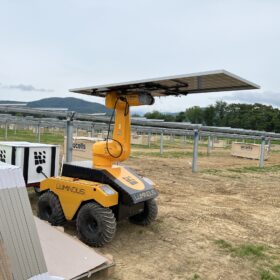Addressing a black-tie business dinner in the Hunter region of NSW, Prime Minister Anthony Albanese said the government will look to match clean technology funding currently being seen in the USA, the EU, Japan, and Korea. This, he argued, would allow Australia to be more than just an observer of the global energy transition.
Referencing the United State’s climate legislation, passed in August 2022, the $624 billion (USD520 billion) Inflation Reduction Act (IRA), Albanese inferred reliable and affordable clean energy, from solar to green hydrogen to offshore wind could power a new generation of advanced manufacturing and heavy industry, “in our suburbs and our regional centres”.
“There is a huge prize on offer here, across every sector of our economy and in every market in our region. We don’t have to go dollar-for-dollar in our spending. But we can go toe-to-toe on the quality and impact of our policies. Our new Net Zero Economy Authority will be part of that.”
Tim Buckley, the director of Climate Energy Finance, however expressed his fear on LinkedIn that the Australian Government would hide behind the rhetoric that Australia can’t afford to think big, in terms of the scale of the need and the massive intergenerational opportunity.
“Australia is late to the party. BHP has just announced a USD3.5 billion write-down on a business it literally invested $10 billion in, just two years ago, i.e., OZ Minerals, and has been caught with its strategic dunce cap on, again, like it was in US shale gas, and like Rio Tinto was with its Riversdale Coal and Alcan debacles,” Buckley said.
“It is clear China has invested billions over the last five years in Indonesian nickel and nickel refining, flooding the world with oversupply so as to crush the price China has to then pay for its commodity imports.”
Buckley calls for public-private partnerships with world-leading financial majors within and outside of Australia and with global industry leaders, the country’s biggest customers, citing China’s Contemporary Amperex Technology Co., Japan’s Panasonic & Mitsui & Co., Ltd., and India’s Reliance Industries Limited as examples.
“Likewise in global solar supply chains, and wind supply chains, and EV and grid infrastructure, and green iron, which means working with China to jointly develop a Greater Asian response to the brilliant EU Carbon Border Adjustment Mechanism (CBAM) and Emissions Trading System (ETS).”
“Australia needs to have more public finance support for our leading Australian corporates and that means a $20 billion strategic equity mandate for the Future Fund, and yet more capital support for the Clean Energy Finance Corporation, the Northern Australia Infrastructure Facility (NAIF), Australian Renewable Energy Agency (ARENA), National Reconstruction Fund (NRF) and Export Finance Australia,” Buckley said.
In response to Albanese’s comments, Kane Thornton Chief Executive Clean Energy Council said the plan for a substantial funding package to respond to the Biden Administrations’ IRA is encouraging but works hand in glove with all tiers of government improving policies aimed at minimising costs and delays.
“Global clean energy capital is on the hunt for the most competitive markets in which to invest, and Australia will need to step up with a bold and far-reaching policy and funding package which can act as a magnet for new investment in a fiercely competitive global environment,” Thornton said.
This content is protected by copyright and may not be reused. If you want to cooperate with us and would like to reuse some of our content, please contact: editors@pv-magazine.com.








By submitting this form you agree to pv magazine using your data for the purposes of publishing your comment.
Your personal data will only be disclosed or otherwise transmitted to third parties for the purposes of spam filtering or if this is necessary for technical maintenance of the website. Any other transfer to third parties will not take place unless this is justified on the basis of applicable data protection regulations or if pv magazine is legally obliged to do so.
You may revoke this consent at any time with effect for the future, in which case your personal data will be deleted immediately. Otherwise, your data will be deleted if pv magazine has processed your request or the purpose of data storage is fulfilled.
Further information on data privacy can be found in our Data Protection Policy.